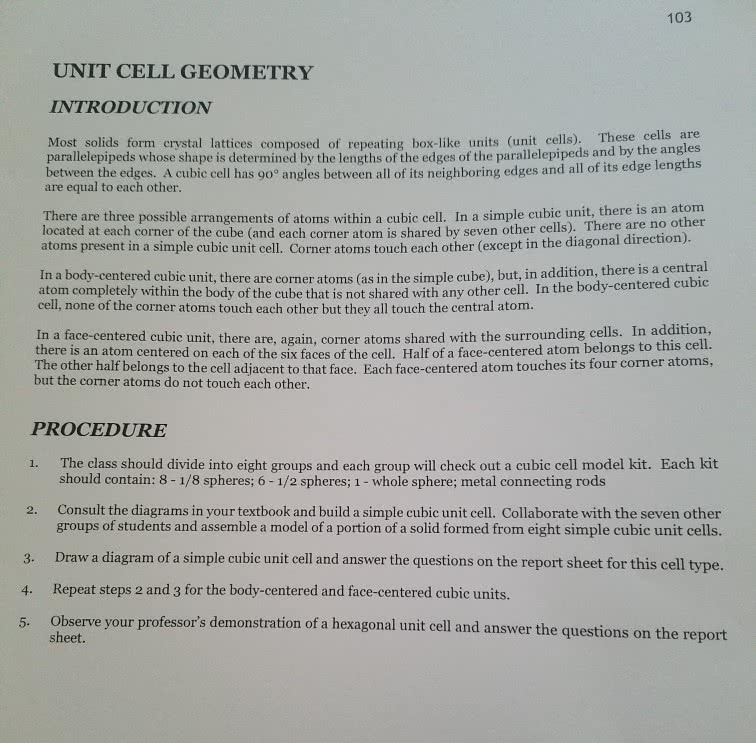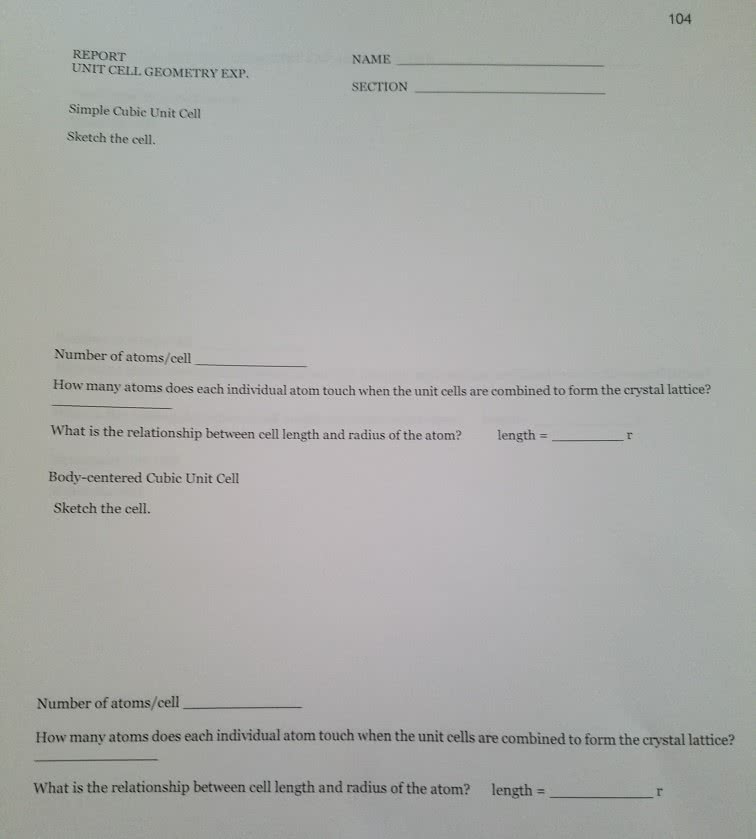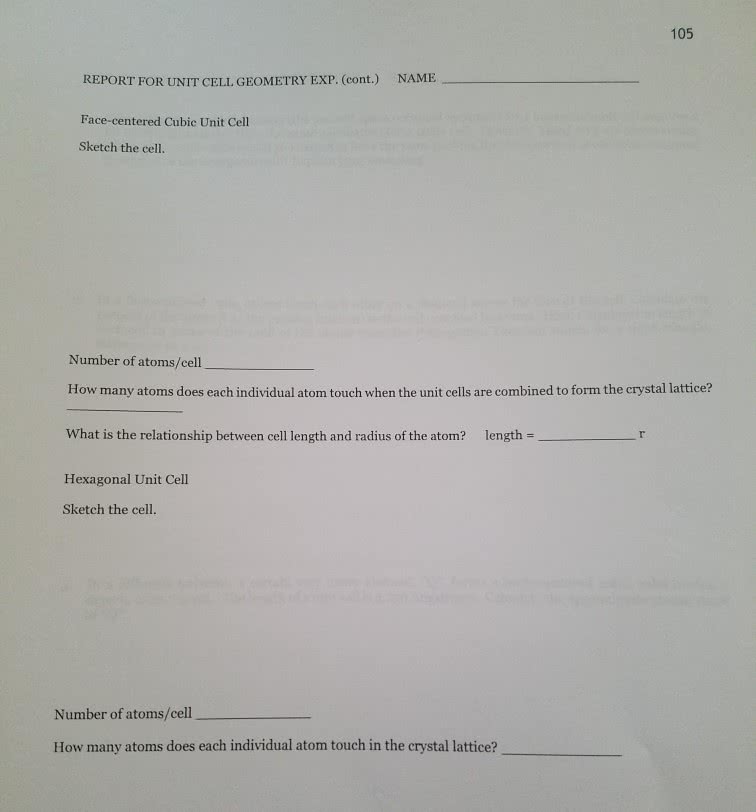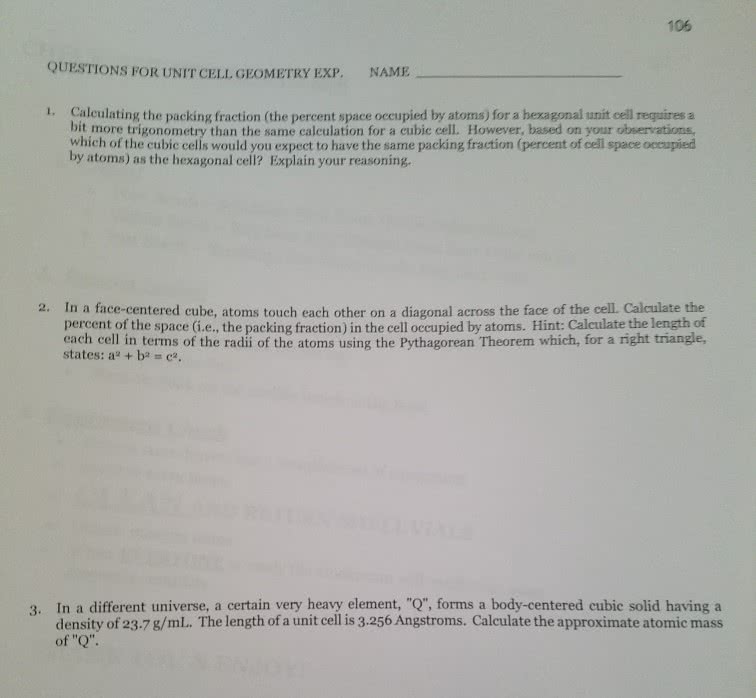CHEM 312 Chapter 7.1-7.3:

CHEM 312 CH 7.1-7.3
● Chapter 7 (Miessler): Solid-state chem uses the same principles that are used in bonding. First,
describe common structures of crystals and then consider bonding according to molecular orbitals.
○7.1 Formulas and Structures 215: unit cell = atoms, ions, molecules packed in regular geometric
arrays, with simplest repeating unit. Need to consider role of relative sizes of components in
determining structure.
■7.1.1 Simple Structures 215: unit cell isa structural component that is repeated in all
directions that result in a macroscopic crystal. Bravais lattices are 14 possible crystal
structures. Several different unit cells are possible for some structures, and out of these,
the one that is chosen could be due to convenience. The atoms at the corners, edgs, or
faces of the unit cell are shared with other unit cells like this: 1. Atoms at corners
contribute ⅛ to each. 2. Atoms at corners of non rectangular unit contribute one atom
total to unit cell. 3. Atoms on edges of unit cells are shared by 4 unit cells. 4. Atoms on
faces of unit cells between two unit cells and contribute to ½ to each. The position of
atoms are lattice points.
● Cubic crysta class is the simple cube that is called the primitive cubic structure
with atoms at 8 corners. 6 atoms surround each identical lattice point atom -
coordination number of each atom is 6.
● Body centered cubic is if another sphere is added in the center of the simple
cubic structure.
● Metallic crystals are usually crystallized in body-centered cubic. Changes in
pressure or temperature can change the structure of many metallic crystals.
● Properties of metals: dislocations = imperfections in crystals where atoms are out
of place, but persist due to crystal rigidity, render a metal more susceptible to
physical deformation.
● Diamond: has same overall geometry as zinc blende but with all atoms identical
■7.1.2 Structures of Binary Compounds 221: binary compounds may have simple crystal
structures. There are two tetrahedral holes and one octahedral and if the larger ions are
in close packed structures, ions of the opposite charge occupies these holes. This
depends on 2 factors.
● The relative sizes of the atoms or ions
● The relative numbers of cations and anions.
● NaCl - make up of face-centered cubes
● CsCl - will fit exactly in the center of a cubic structure,
● ZnS - has 2 common crystalline forms - both with coordination number 4.
■7.1.3 More Complex Compounds 224: it is possible to form many compounds by
substitution of one ion for another in a lattice. If the charges and ionic sizes are similar,
there may be a wide range of possibilities that result in the same crystal structure. If the
ion charges are different, the structure may change
■7.1.4 Radius Ratio 224: coordination numbers in different crystals depend on the sizes
and shapes of the inons or atoms, their electronic structure, and the temperature and
pressure under which they are formed.
○7.2 Thermodynamics of Ionic Crystal Formation 226: formation of ionic compounds from the
elements can be written as a series of steps that sum to afford the overall reaction. The
born-haber cycle considers the series of component reactions that can be imagined as
individual steps for compound formation.
■7.2.1 Lattice Energy and the Madelung Constant 226: the calculation of the crystal lattice
energy may seem straightforward (take every pair of ions and calculate the sum of the
find more resources at oneclass.com
find more resources at oneclass.com
Document Summary
Chapter 7 (miessler): solid-state chem uses the same principles that are used in bonding. First, describe common structures of crystals and then consider bonding according to molecular orbitals. 7. 1 formulas and structures 215: unit cell = atoms, ions, molecules packed in regular geometric arrays, with simplest repeating unit. Need to consider role of relative sizes of components in determining structure. 7. 1. 1 simple structures 215: unit cell isa structural component that is repeated in all directions that result in a macroscopic crystal. Several different unit cells are possible for some structures, and out of these, the one that is chosen could be due to convenience. The atoms at the corners, edgs, or faces of the unit cell are shared with other unit cells like this: 1. Atoms at corners of non rectangular unit contribute one atom total to unit cell. Atoms on edges of unit cells are shared by 4 unit cells.





